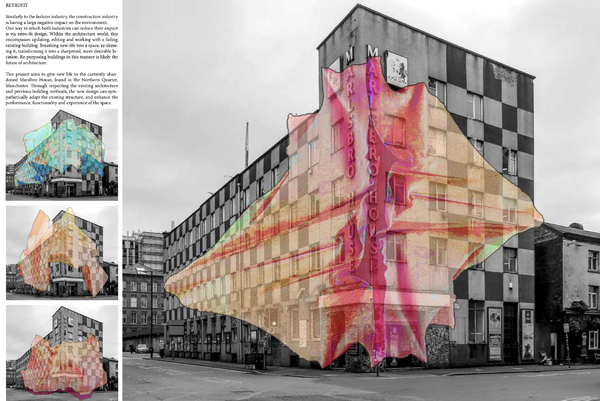Fashion & Architecture
This thesis explores the relationship between Fashion and Architecture.
Since the industrial revolution, cotton mills have remained an important element of Manchester's fabric. Therefore the site chosen for this project is Marlsbro House, a historic mill building, on Hilton Street, in the Northern Quarter.
The mill was built from red brick and cast iron columns, and in the 1930s, a checkerboard render was added to the exterior facade. Previously, the building functioned as a factory for 'H.C. Foreshaw Costume' and 'Marlsbro Weathercoats". However, now the site is owned by online fashion retailer “BooHoo”, and in 2020, the retailers deemed the building unsafe and it now remains empty, ready to be revived.
To meet local conservation regulations and support the city’s sustainability agenda, this thesis plans to retrofit the existing building. Externally the red brick will be revealed again and draped in an ETFE roofing structure. Internally the architecture will offer a space to recycle old clothing, design fashion pieces, buy new clothing items and exhibit fashion-related work. Throughout the design process, it was key that the building celebrates its industrial history and emulates the language of fashion.
The design aims to imitate fashion principles in four key ways:
1. The retrofit design speaks to the parallels both industries are facing regarding becoming sustainable and environmentally friendly.
2. The ‘lighting-up’ of the exterior aims to reflect how fashion changes seasonally and outfits change daily, the lights and projections give the building the ability to change appearance.
3. The protruding balconies, open atrium, dramatic roofing, and large staircase highlight how the building can be used as a fashion show and exhibition space.
4. The large, over-the-top ETFE roof dresses the naked and exposed brick of the existing building, covering what already exists and uniquely expressing the building’s personality, similarly to the way fashion clothes a person's body.


